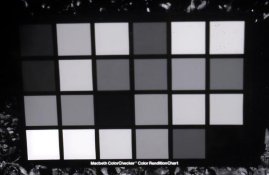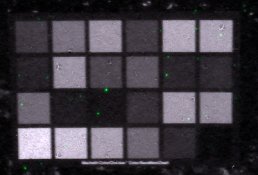Photo Engineer
Subscriber
There has been some discussion herabouts regarding the senstivity of films and papers. So, having access to a spectrosensitometer, I have put together a small demo for you all.
First off, a spectrosensitometer is a special sensitometer that uses a monochromator (that is a device like a prism that splits light up into its components) and presisely exposes film at equal energy in 10 nm (nanometer) increments from 400 - 700 nm, which is the visible spectrum.
The examples that I show are as follows:
1. Raw emulsion (AgBr)
2. Sensitized emulsion (I overdid it a bit so it is foggy)
3. 1x level of ortho (green) spectral sensitzing dye added to #2.
4. 2x level
5. 4x level
6. Ilford MGIV paper
Now, the dye I used is a little long, I would prefer something that does not go so far into the red region, and the dye isn't perfect for ortho sensitivity either, but this is a first approximation of an ortho sensitive material.
Anyhow, this is the type of test used to view the sensitivity of a film or paper. These coatings were on Strathmore Smooth at 500 mg/ft square of silver and 1000 mg/ft square of gelatin. Glyoxal was the hardener, TX100 was the spreading agent, and the process was Dektol, stop, hardener fix and wash.
This not only shows where the silver-gelatin experiments are, it gives you a benchmark for what can be achieved with silver-gelatin. This paper material has an in-camera speed of ISO 25 which is what the Ilford MGIV has under identical conditions.
So, if you cut up some MGIV and expose it in-camera, you have a mighty fine ortho paper negative material, however, the contrast varies as a function of color which is a bit odd when you see the results.
PE
First off, a spectrosensitometer is a special sensitometer that uses a monochromator (that is a device like a prism that splits light up into its components) and presisely exposes film at equal energy in 10 nm (nanometer) increments from 400 - 700 nm, which is the visible spectrum.
The examples that I show are as follows:
1. Raw emulsion (AgBr)
2. Sensitized emulsion (I overdid it a bit so it is foggy)
3. 1x level of ortho (green) spectral sensitzing dye added to #2.
4. 2x level
5. 4x level
6. Ilford MGIV paper
Now, the dye I used is a little long, I would prefer something that does not go so far into the red region, and the dye isn't perfect for ortho sensitivity either, but this is a first approximation of an ortho sensitive material.
Anyhow, this is the type of test used to view the sensitivity of a film or paper. These coatings were on Strathmore Smooth at 500 mg/ft square of silver and 1000 mg/ft square of gelatin. Glyoxal was the hardener, TX100 was the spreading agent, and the process was Dektol, stop, hardener fix and wash.
This not only shows where the silver-gelatin experiments are, it gives you a benchmark for what can be achieved with silver-gelatin. This paper material has an in-camera speed of ISO 25 which is what the Ilford MGIV has under identical conditions.
So, if you cut up some MGIV and expose it in-camera, you have a mighty fine ortho paper negative material, however, the contrast varies as a function of color which is a bit odd when you see the results.
PE














